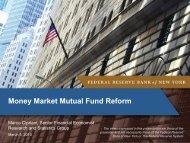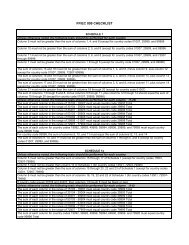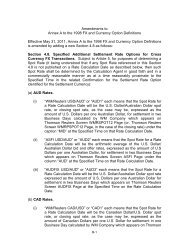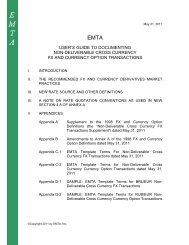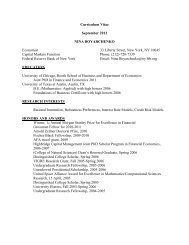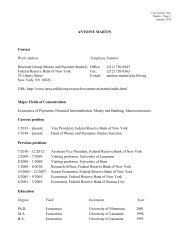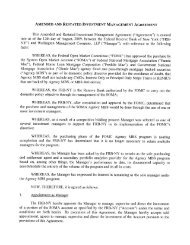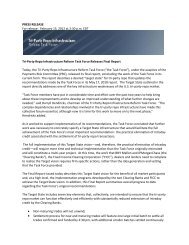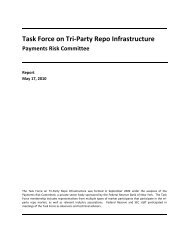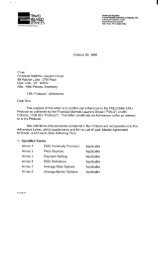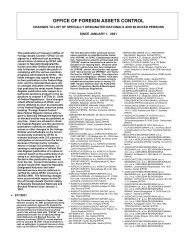Residential Foreclosures in the City of Buffalo, 1990-2000 - Federal ...
Residential Foreclosures in the City of Buffalo, 1990-2000 - Federal ...
Residential Foreclosures in the City of Buffalo, 1990-2000 - Federal ...
You also want an ePaper? Increase the reach of your titles
YUMPU automatically turns print PDFs into web optimized ePapers that Google loves.
foreclosed <strong>in</strong> less than four and more than eight years. Overall, <strong>the</strong> share <strong>of</strong> foreclosures<br />
on loans more than eight years old tended to be similar among communities, with<br />
Riverside, 17 percent, and South <strong>Buffalo</strong>-River, 17 percent, demonstrat<strong>in</strong>g somewhat<br />
smaller percentages than that <strong>of</strong> <strong>Buffalo</strong> as a whole.<br />
We also looked at how <strong>the</strong> age <strong>of</strong> foreclosed loans varied by <strong>the</strong> type <strong>of</strong> loan<br />
(Chart 10). Conventional loans were much more likely than FHA loans to foreclose<br />
quickly (55 percent versus 26 percent); <strong>the</strong> same can be said for ref<strong>in</strong>ance loans vis-à-vis<br />
purchase loans. These f<strong>in</strong>d<strong>in</strong>gs suggest that different types <strong>of</strong> loans have different<br />
underwrit<strong>in</strong>g standards, or borrower pools at vary<strong>in</strong>g risk levels. In this case, a good part<br />
<strong>of</strong> <strong>the</strong> disparity may reflect <strong>the</strong> <strong>in</strong>fluence <strong>of</strong> subprime lend<strong>in</strong>g. As we discussed, higher<br />
risk subprime loans are most <strong>of</strong>ten for conventional ref<strong>in</strong>anc<strong>in</strong>gs.<br />
FHA/VA<br />
Conventional<br />
Purchase<br />
Ref<strong>in</strong>ance<br />
Chart 10<br />
Age <strong>of</strong> Loan at Default by Type <strong>of</strong> Loan<br />
Percentage Less than Four Years and Percentage More than Eight Years<br />
Percent<br />
0 10 20 30 40 50 60 70 80<br />
Sources: Erie County Civil Court records; Erie County property database; author’s calculations.<br />
54<br />
More than eight<br />
Less than four<br />
Owner Tenure<br />
We now shed light on <strong>the</strong> contribution <strong>of</strong> ref<strong>in</strong>ance loans to early foreclosure by look<strong>in</strong>g<br />
at how long borrowers owned <strong>the</strong>ir property prior to foreclosure. Owner tenure may also<br />
be <strong>in</strong>dicative <strong>of</strong> <strong>the</strong> amount <strong>of</strong> equity homeowners had accrued <strong>in</strong> <strong>the</strong>ir property.<br />
Fur<strong>the</strong>rmore, dist<strong>in</strong>guish<strong>in</strong>g between short- and long-tenure owners helps to clarify <strong>the</strong><br />
nature <strong>of</strong> neighborhood transition. Short-tenure homeowners are more likely to be <strong>in</strong>movers—<br />
new residents to a neighborhood— while long-tenure homeowners are more<br />
likely to be out-movers— residents leav<strong>in</strong>g a neighborhood.



